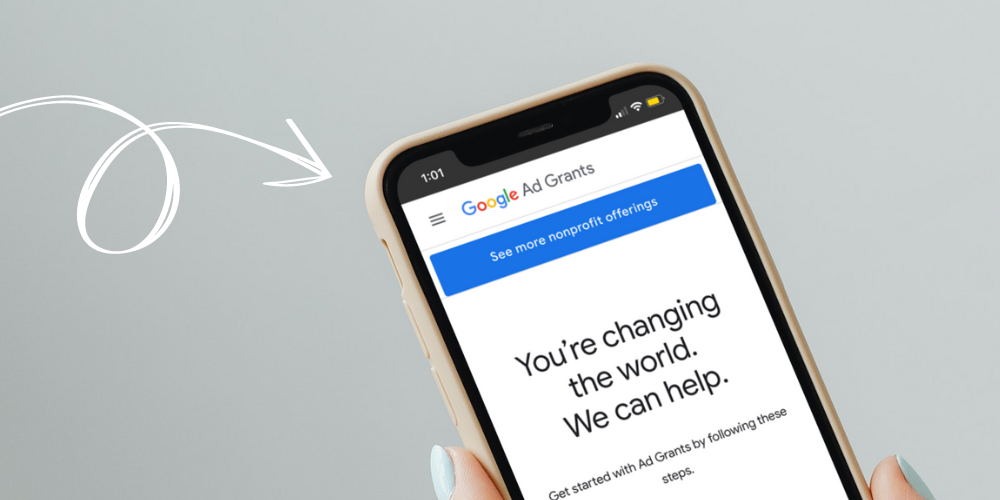How to reach a new generation of volunteers and donors
Your donors and volunteers are great! You love them. You appreciate them.
You just wish you had more of them, right?
Finding new donors, members, and volunteers, especially in younger generations, can be challenging for many nonprofits and associations.
Expanding your audience is crucial for a vibrant, sustainable community of supporters and the success of your mission.
Finding your audience
Before you can try to reach a new audience, you need to know who that audience is. Are you trying to reach more people of the same demographics and interests as your current supporters, or do you want to connect with an entirely different audience?
Often, when we talk about new audiences, we get kind of… vague. We want “new” people. “Young” people. “More” people. Those imprecise descriptors are hard to measure and define. Getting specific will help lift these efforts.
Creating a donor or volunteer persona can help you make decisions about how to reach out. A supporter persona is a description of a semi-fictitious person who represents the audience you’re trying to reach. And even if the people are semi-fictitious, the best personas are built with your actual supporter data in mind.
For example, when studying your CRM, you may notice segments of supporters who share some characteristics, like age, gender, socioeconomic status, or interests.
Let’s imagine you discover that half of the volunteers at your animal shelter are retired women in their mid-sixties who have more than one pet. As you think about their interests and involvement with your organization, you might create the following persona to describe them.
Ada Animal Lover is an active retiree who volunteers at the shelter twice a week. She is deeply attached to her pets, and loves helping to match people with shelter animals. She’s not an animal rights activist, PETA is too intense for her, but she likes to make a difference and give lots of ear scratches. Ada is very involved in the community, we’re not the only organization she volunteers with or donates to. She makes a few mid-level gifts each year, but considers her volunteerism her greatest contribution.
To appeal to more Adas, you’ll focus your messages on helping people find pets to love, avoid disturbing animal abuse stories or images, and connect with other community organizations.
But what if you want to find a new kind of person?
If you’re trying to reach an entirely new audience, you won’t be able to rely on your existing supporter data. You’ll have to imagine the persona you’re approaching. Let’s say you want to expand your volunteer base to include people under forty. You might create the following persona to guide you.
Nadia Newcomer is a thirty-five year-old professional with one pet. She devotes considerable time and money to her pet’s welfare. She loves animals, and is looking for new ways to meet people and give back to the community. Nadia does not have a lot of free time, and many volunteer opportunities don’t work for her schedule.
Messages for Nadia will highlight a love of animals, social opportunities, and flexible scheduling options.
Personas can help you clarify both your thinking and your marketing. Have you created marketing that is absolutely perfect for attracting Ava, and then wondered why Nadia doesn’t respond? Personas can help you identify this problem more easily and adjust in a way that makes sense.
1. Targeted engagement
If you’re trying to engage younger audiences, you need to offer them opportunities that suit their lifestyles.
This may mean adjusting how you do things. For example, if you’re trying to attract younger volunteers, you’ll need to have some volunteer opportunities on weeknights or weekends. Likewise, a gala with $100 tickets probably won’t attract many new donors in their twenties.
Think about the persona you’ve created. What do they like to do? What kind of opportunities would they jump on and which would be uninteresting or impossible for them?
To engage Nadia Newcomer, the animal shelter might decide to host “Mutts and Mixer” events for young professionals to tour the animal shelter, pet some dogs, and meet each other. This would appeal to Nadia’s love of animals and desire for social opportunities. At the event, the shelter would highlight flexible volunteer opportunities and other ways to help.
If you’re not sure what your new persona would like most, try to find a few people who match it, and ask them. You can recruit an advisory board or committee of younger people to help you think through attracting a new audience, or simply ask people, “Would you and your friends do this? Why or why not?”
2. Social media
Social media is about more than posting updates from your organization. It’s an opportunity to raise brand awareness, build relationships with your supporters, and connect with new audiences.
With 82% of Americans using social media, it can be a great channel to meet potential supporters where they already are.
Which social media channels are your supporters, or desired potential supporters, active on? If you’re aiming for a younger audience, it’s time to consider TikTok. If you’re trying to reach more potential board members, LinkedIn may be a better fit.
Use your organic posts to begin speaking to your target audience. Think about the topics they’re interested in, and post content that highlights it.
For example, if you were trying to attract Nadia Newcomer to your organization, you might post cute animal photos, flexible volunteer opportunities, and information about events.
Paid social media can help you reach your desired audience faster.
Lookalike audiences can help you reach more people who share characteristics with your existing followers. If you want to attract more volunteers and donors who are like the ones you already have, this is a good way to do it. If you’re looking for a new audience, target your paid social to people who fit the persona you’ve created.
3. Digital advertising
If the word “advertising” makes you a little nervous, you’re certainly not alone among nonprofit professionals. Isn’t advertising about selling stuff? We’re changing the world, not selling widgets, right?
Digital advertising is really just another way to share your mission with new audiences, and it doesn’t have to feel gross. Organizations of all kinds can benefit from adding digital advertising to their strategy.
Unlike putting up a billboard or putting an ad in the newspaper, digital ads can be targeted directly to the people most likely to be interested in them.
- Search targeting serves ads to people who have typed keywords into a search engine. For example, if Nadia Newcomer searched “local animal shelter,” she’d start seeing your ads as she wandered around the web.
- Affinity targeting lets you choose the groups you want to see your advertising.
- Retargeting lets you reach out to the people who’ve visited your website. Has someone clicked on your volunteer page without signing up? Your ads can remind them of their interest.
Building a new generation of supporters
Whether you’re trying to grow the supporter base you already have, or cultivating an entirely new group of people, technology can help you build your community.
If you base your campaigns and opportunities on what’s most interesting and important to your potential supporters, and then use technology tools to deliver your messages directly to them, you’ll start to see more new faces at your organization.
About the author:
Megan Donahue is a communications consultant, writer, and nonprofit nerd. She's the host of Love & Robots and fascinated by the intersection of nonprofits and technology.
Share this
You May Also Like
Related

7 steps to using all of your Google Ad Grant budget

Year-end giving ideas: 3 ways to boost EOY fundraising


